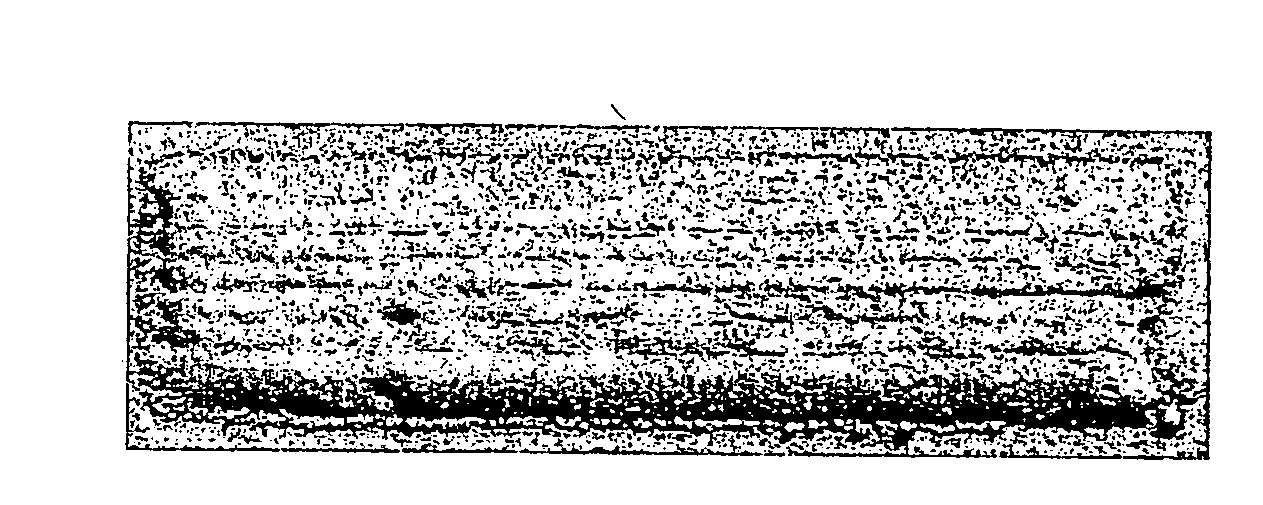Laser Cladding on Low Heat Resistant Substrates
a technology of low heat resistance and substrate, applied in the direction of metal-working equipment, metal-coating process, welding/cutting media/materials, etc., can solve the problems of corrosive gases, tuyeres and nozzle tips of metallurgical vessels, and the presence of hot particle erosion and molten slag or metal attack of lances and nozzles of metalurgical vessels
- Summary
- Abstract
- Description
- Claims
- Application Information
AI Technical Summary
Benefits of technology
Problems solved by technology
Method used
Image
Examples
example
[0076]A laser cladding process was conducted utilizing Nd:YAG laser. The process parameters are set forth below. The coating material was injected into a melt pool. The laser beam was guided over the part surface generating a weld bead. Overlapping the individual weld bead at a certain index produced the clad. The clad layer was then polished. FIG. 1 shows a Nd:YAG laser clad surface of a CoCrC coating applied onto the copper substrate in accordance with this example. FIG. 2 shows a Nd:YAG laser clad and polished surface of a CoCrC coating applied onto the copper substrate in accordance with this example.
Base metal: Copper (Cu)
Coating material: CoCrC alloy
Laser: Nd:YAG, diode pumped, fiber delivered maximum output power of 5 kW
Laser power utilized: 4 kW
Laser spot size: approximately 3 mm diameter
Surface speed: 250-400 mm per minute
Index: 1.5 mm
[0077]Powder feed rate: 6 grams per min.
PUM
| Property | Measurement | Unit |
|---|---|---|
| wavelengths | aaaaa | aaaaa |
| wavelengths | aaaaa | aaaaa |
| wavelengths | aaaaa | aaaaa |
Abstract
Description
Claims
Application Information
 Login to View More
Login to View More - R&D
- Intellectual Property
- Life Sciences
- Materials
- Tech Scout
- Unparalleled Data Quality
- Higher Quality Content
- 60% Fewer Hallucinations
Browse by: Latest US Patents, China's latest patents, Technical Efficacy Thesaurus, Application Domain, Technology Topic, Popular Technical Reports.
© 2025 PatSnap. All rights reserved.Legal|Privacy policy|Modern Slavery Act Transparency Statement|Sitemap|About US| Contact US: help@patsnap.com


